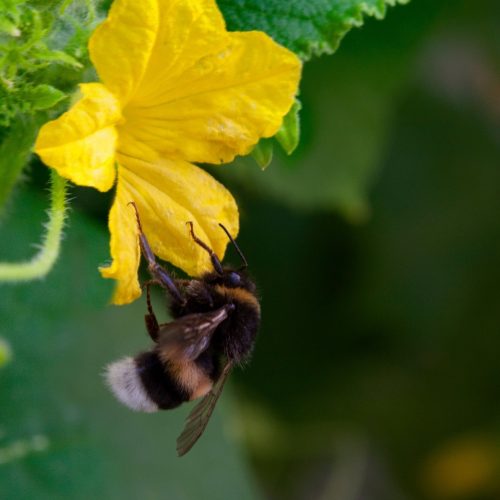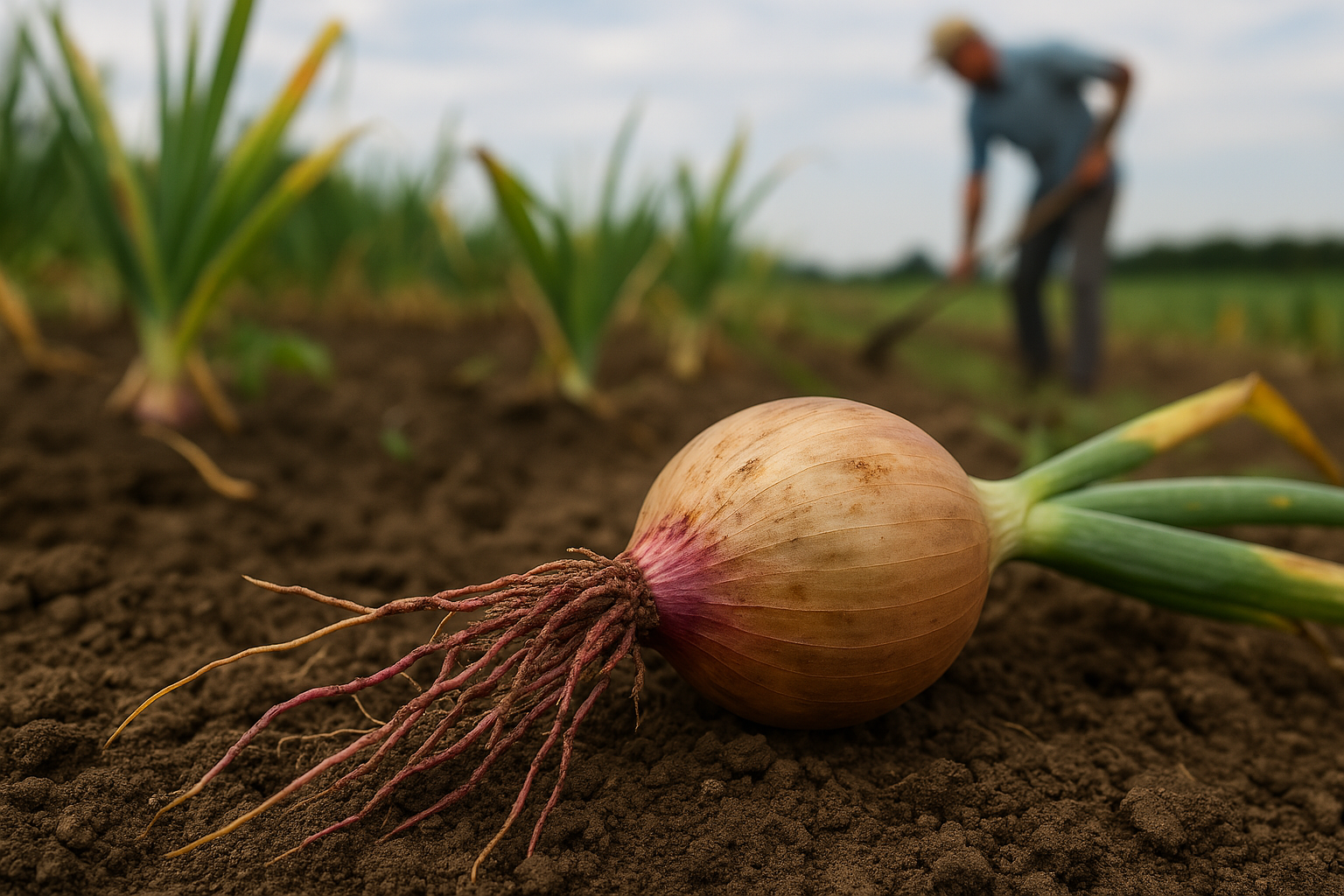Gray Onion Blight
The causative agents of this disease are three species of fungi that lead to gray blight: Botrytis squamosa, B. cinerea, and B. allii. Symptoms of this disease include deep brown decay accompanied by gray mold and black sclerotia at the neck of the onion.
In Iran, B. allii is considered the main cause of onion decay. B. squamosa causes severe burning on leaves and can kill the plant, while B. cinerea usually only creates small brown spots on the leaves. B. allii mostly attacks the bulb and has little effect on the leaves unless they are injured, in which case small brown spots can form.
These fungi grow in cool, humid regions and produce sclerotia that can persist in plant debris for extended periods. The sclerotia can germinate and produce conidia, which facilitate the spread of the fungus. Under certain favorable conditions, sclerotia can produce apothecia, and ascospores can be used for the spread of the fungus. The primary mode of dispersal is through conidia.
Alternaria Disease
Alternaria causes wavy lesions on the leaves and affects plants such as tomatoes, potatoes, eggplants, and onions. In Iran, tomatoes and potatoes are the main hosts of this disease. This fungus is seed-borne in tomatoes and tuber-borne in potatoes. The species A. alternata is common in the northern regions, and its spores have both longitudinal and transverse walls, which help to identify the species.
Alternaria survives on non-decayed plant materials and living plant debris, where it can continue to produce spores as long as these materials remain viable. It attacks the stems and fruits of tomatoes, causing them to dry out. It can also cause damping-off of young plants if the seed or potato eye is contaminated.
Root and Bulb Rot of Onion (Fusarium cepae f.sp. oxysporum)
This disease is caused by the fungus Fusarium cepae f.sp. oxysporum and has caused significant damage to crops in various regions of Iran, especially in Azerbaijan. Symptoms include yellowing at the tips of the leaves, wilting of the plants, and the yellowing spreading downwards. When the onion bulbs reach the size of a hazelnut, widespread spots and wilting are observed. The roots of the infected plants dry out, turn brown, and develop a pink or purple coloration.
This fungus also causes decay in storage and can result in sudden plant death in the fields. It does not require wounds to enter the plant, but the presence of wounds on the bulbs facilitates the disease’s progression. The primary hosts of this fungus are onions, shallots, and occasionally garlic.
Disease Control:
- Avoid excessive fertilization.
- Control pests to prevent the formation of wounds.
- Careful harvesting and storage (humidity 60-70% and temperature at zero degrees Celsius).
- Use fungicides like carbendazim.
- Biological control using Burkholderia cepacian bacteria.
Onion Bulb Decay by Bacteria
In storage, onion bulbs are attacked by several species of bacteria, and this decay can also occur in the field. Pectobacterium carotovorum pv. carotovorum causes the most damage in storage, entering through the neck of the onion. After the plant matures, this bacterium infects one or more onion scales. The infected tissues first turn yellow or light brown and appear water-soaked. As decay progresses, the scales become soft, and if the infected onions are squeezed, a watery, foul-smelling liquid oozes from the neck area.
This disease only enters the plant through wounds, and Burkholderia cepacia is considered the most significant causal agent of this disease.
Control of Onion Decay:
- Onion aerial parts should be fully matured before harvesting.
- Care should be taken during harvesting and threshing to prevent injury to the onions.
- Storage should have proper ventilation to prevent moisture buildup on the onions. Maintaining a temperature of 0°C and relative humidity of 70% in storage is effective in preventing the spread of the disease.
Pink Root Disease of Onion (Root Pink Onion)
This disease was first reported in 1999 by Dr. Nasr Esfahani in Isfahan. Symptoms of the disease include stunted growth, a decrease in the number of leaves and bulb diameter, and premature bulb formation. The initial leaves turn yellow from the tips and progress downward, eventually turning purple. Infected bulbs mature earlier and can be easily uprooted. The infected plant constantly re-roots and becomes re-infected, showing symptoms of nutrient deficiency.
The causative agent is a fungus called Phoma terrestris, which produces transparent, septate, and branched mycelium and numerous intercellular chlamydospores.
Control of the Disease:
- If possible, disinfect the soil.
- Use long crop rotations.
- Apply fungicide Fusar with irrigation.
Onion Anthracnose
This disease was observed on white onions in the Torbat Heydarieh region in 1997. The symptoms appear as black, concentric circular spots on the onion skin, which reduce the marketability of the product. The causative agent is the fungus Colletotrichum circinans.
Disease Control:
- Cultivate colored onions instead of white onions, as colored onions are resistant to this fungus due to their toxic compounds like protocatechuic acid and catechol.
- Practice crop rotation.
- Harvest the product quickly before contamination occurs.
- Maintain storage humidity below 70% to prevent disease spread.
Stem and Bulb Nematode
The nematode Ditylenchus dipsaci is a global pest that infects over 400 plant species, including onions. This nematode is commonly found in temperate regions and causes significant damage to onions. The nematode is 1-1.3 mm long and about 30 micrometers in diameter.
Symptoms and Damage Signs:
- Onion seedlings grow slowly, and their number decreases.
- Leaves curl and turn yellow or purple.
- Infected bulbs mature earlier than usual and emerge from the soil.
- Nematode damage includes open wounds on the leaves and dwarfing of the plant.
- Infected bulbs may decay in storage.
Control:
- Use disinfected soil for planting onions.
- Practice crop rotation and use resistant plants.
- Control pests and avoid causing wounds during harvesting.








